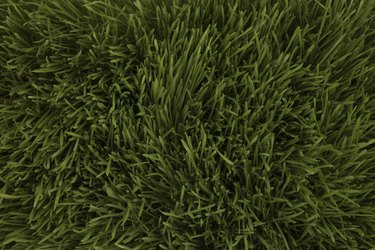Things You'll Need
Lawn roller
Hose with spray attachment or an irrigation system
Lawnmower with a new blade
Nitrogen
Broadcast spreader

Unlike grass seed, sod can turn a barren landscape into a lush, green lawn almost instantly. However, you need to give sod a bit more care than an established lawn. New sod needs time to grow strong roots into the ground. The level of care you give the sod will determine if it develops roots and grows well, or succumbs to death and disease. Proper maintenance, watering and fertilizing will help your sod lawn stay healthy for years to come.
Step 1
Roll or tamp newly installed sod, making it come in contact with the soil gently. The best time to roll sod is shortly after installation, when it is dry enough to touch. Rolling helps make sod roots contact the soil properly, pushes air pockets out and smooths lumps.
Video of the Day
Step 2
Irrigate the sod about 30 minutes after installation. Keep the sod and the soil underneath consistently moist, but not saturated, by watering it daily. Check the moisture by lifting the corners of the sod pieces.
Step 3
Lift the corners of the sod pieces to check for new roots. White roots are new, whereas brown roots are older. Adjust your watering schedule to soaking the top 4 to 5 inches of soil every four to seven days when the sod has grown new roots.
Step 4
Mow the sod down to a height of 2 to 3 inches when it is 4 inches tall. Use a sharp, new mowing blade. Do not remove more than one-third of the leaf blades during mowing.
Step 5
Apply 1 pound of nitrogen per 1,000 square feet with a broadcast spreader, about four to six weeks after installation. Irrigate with 1/2 inch of water to rinse the fertilizer off the grass blades. Put down a second application of nitrogen 30 to 60 days later. For sod installed in the winter, wait to apply nitrogen until after the sod turns green in the spring.
Video of the Day